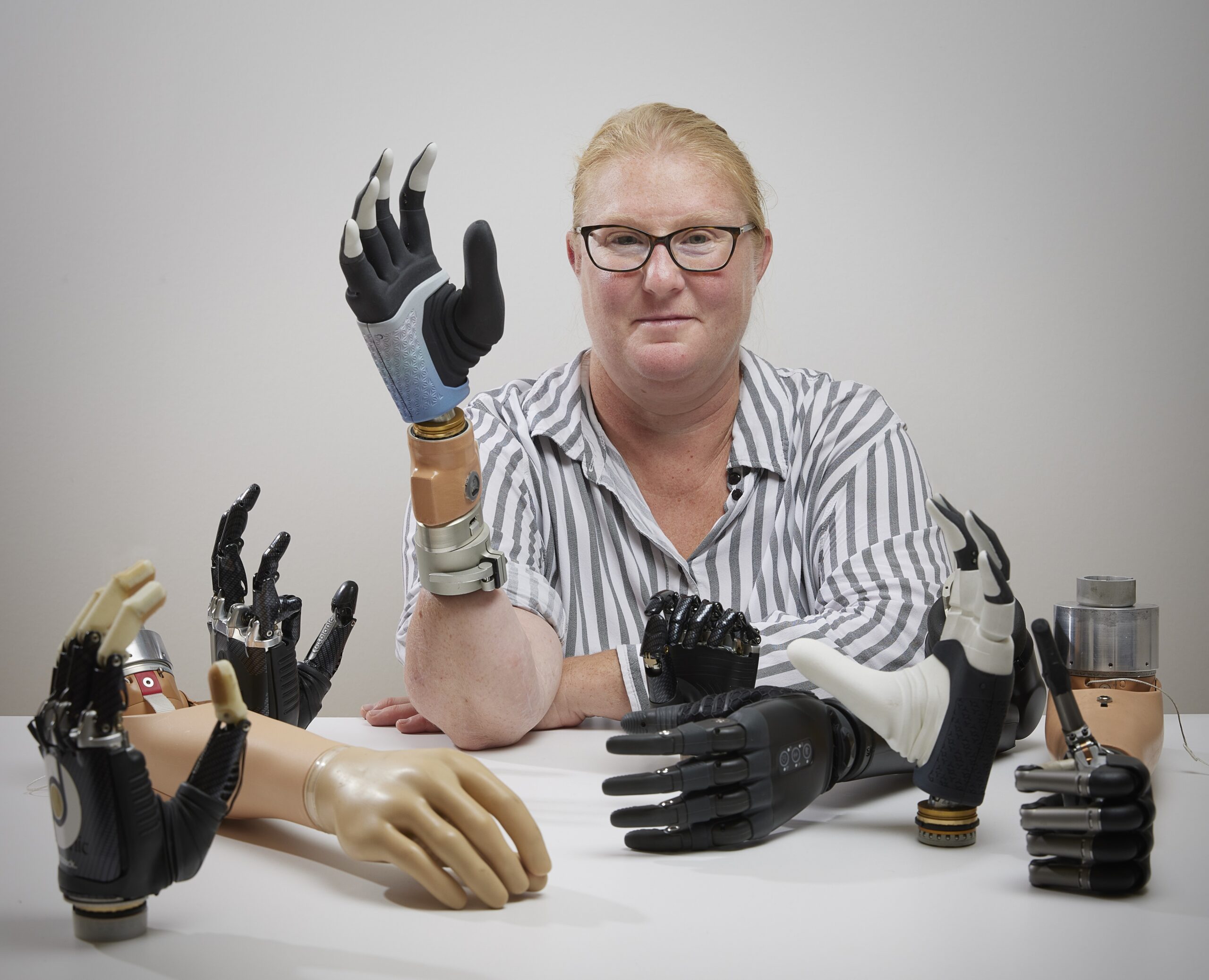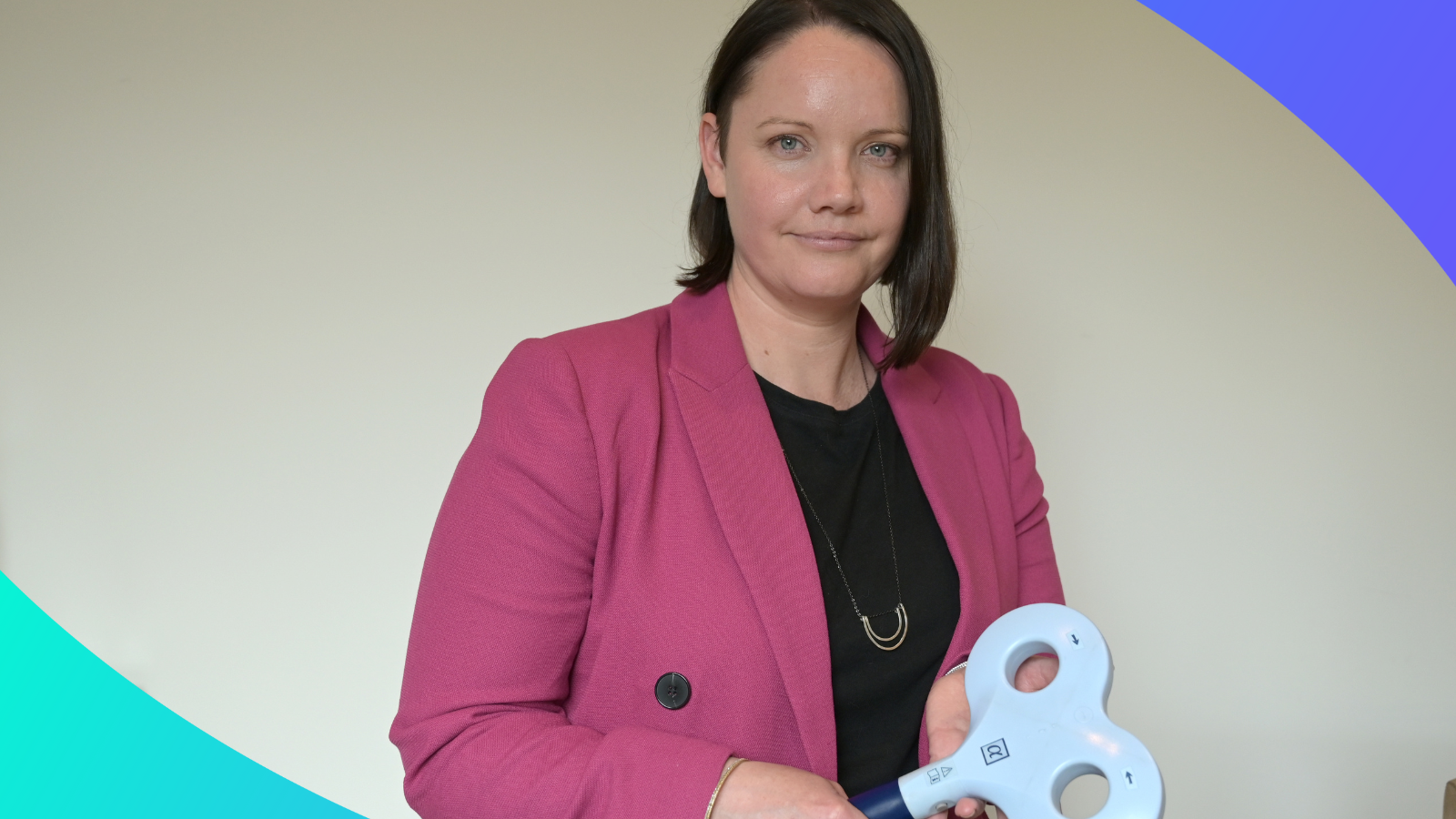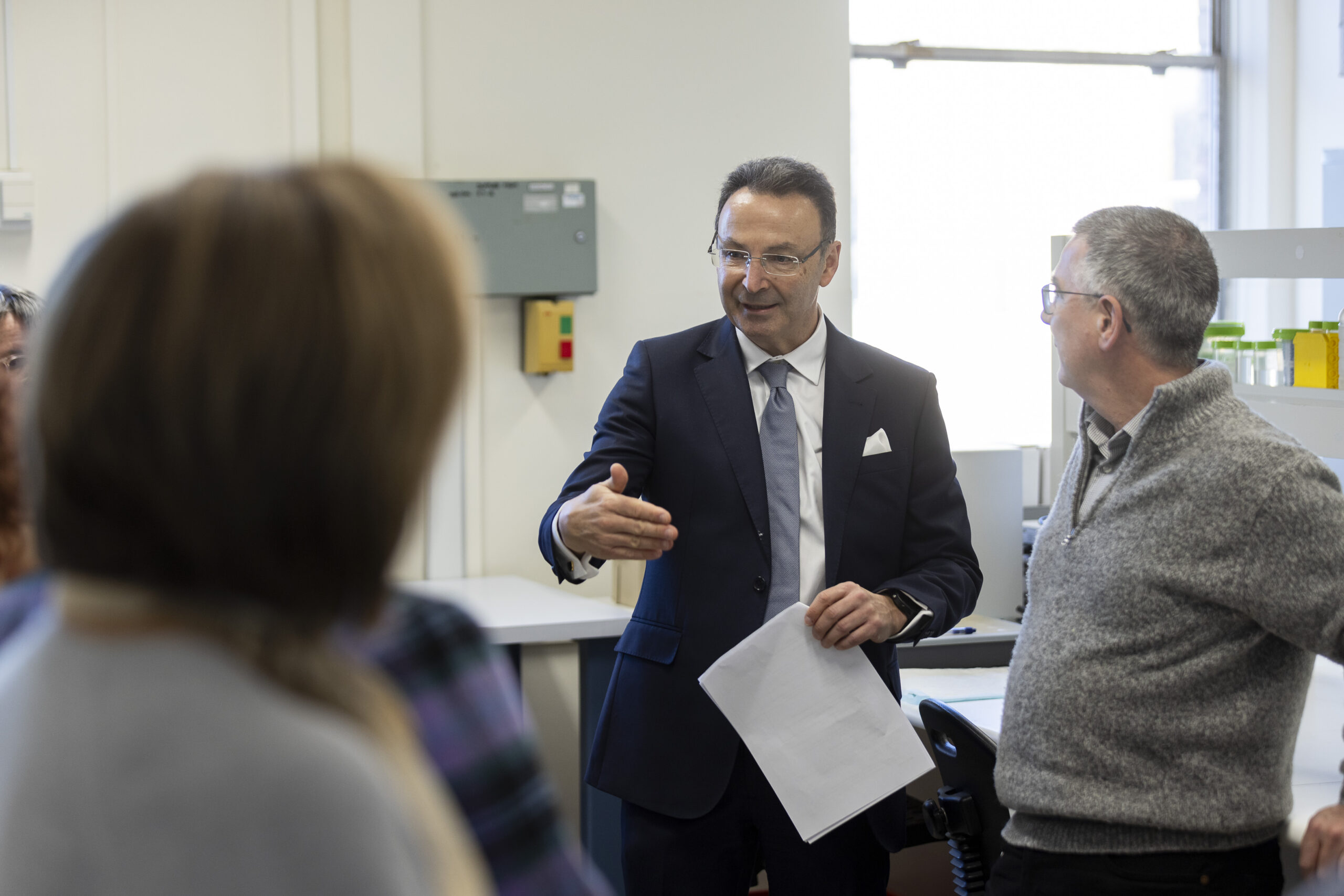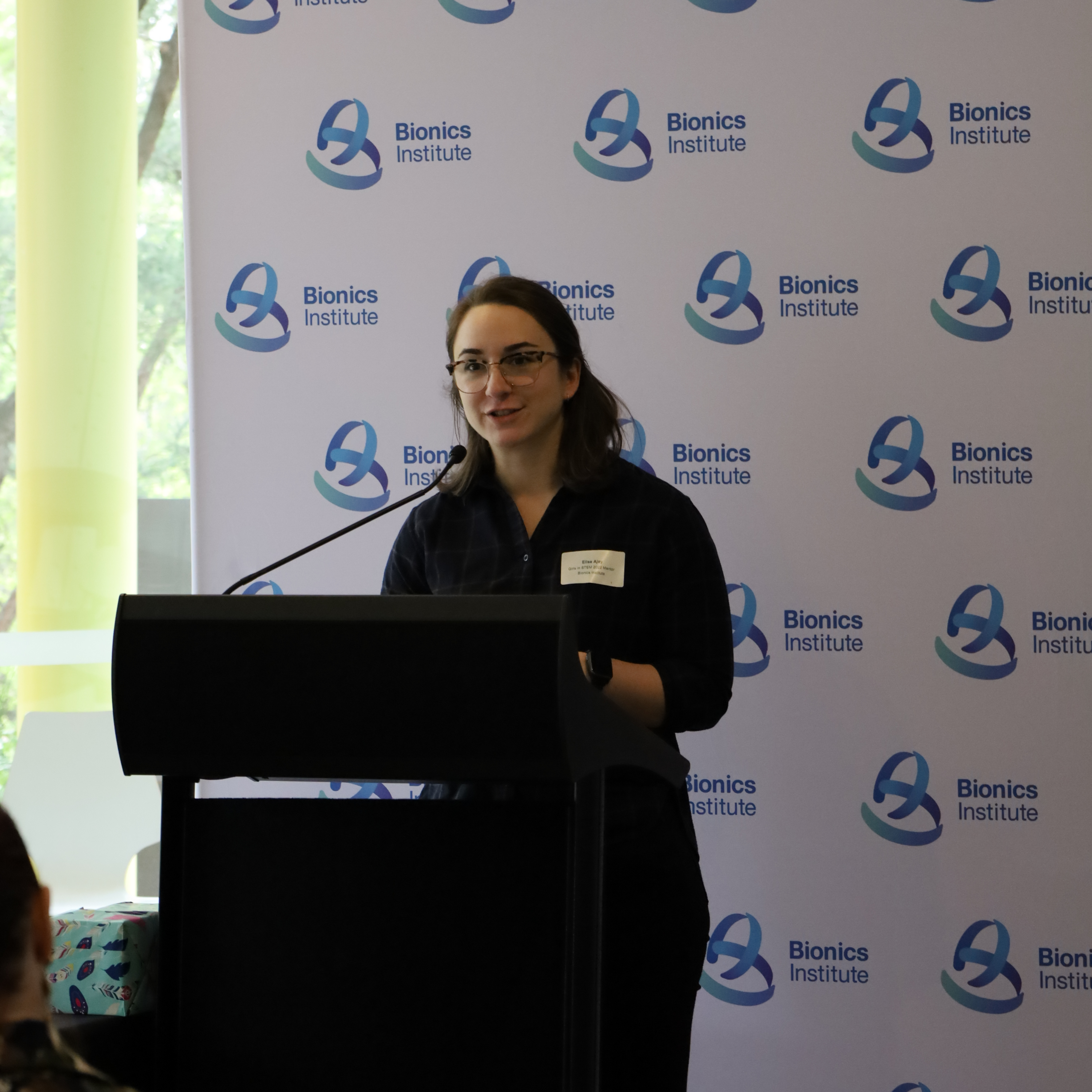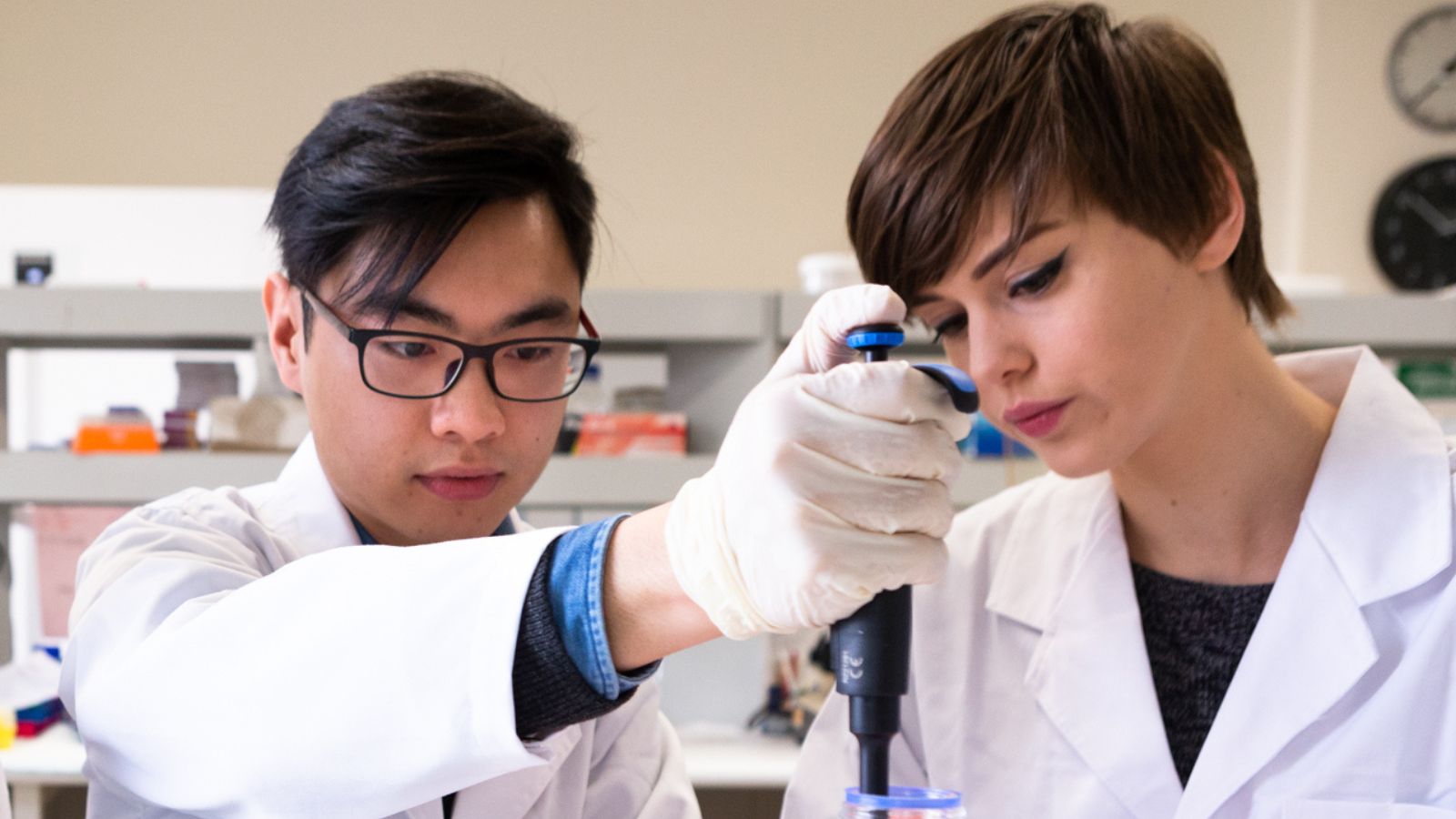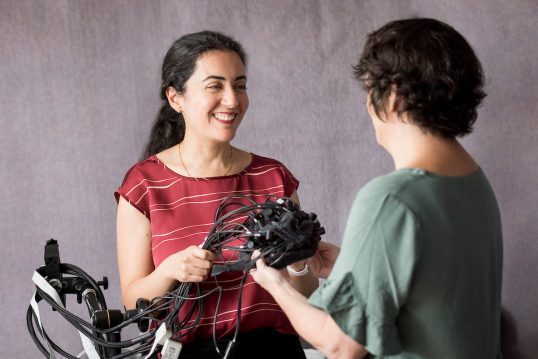Bionics Institute researchers are investigating how a combination of electricity and light stimulation could improve sound and enjoyment of music for people with a cochlear implant.
UK charity RNID support research carried out by Associate Professor Rachael Richardson and her team, who recently published a paper on the latest step forward.
Here we feature an excerpt from an article published in the June 2021 RNID magazine and written by Dr Tracey Pollard.
The cochlear challenge
Cochlear implants are amazing, but they’re not perfect. The sound heard through a cochlear implant is very different to natural hearing. That’s because there are 3,500 hair cells in the average human inner ear. Each cell can detect sound at a very specific frequency (pitch) and passes that information to a single auditory nerve cell.
Replacing 3,500 inner ear hair cells with 24 electrodes
In contrast, cochlear implant arrays have between 12 and 24 electrodes, which do the work of those 3,500 hair cells – a bit like trying to play Chopin’s piano concerto on a child’s electronic keyboard. Needless to say, it doesn’t sound the same to the brain!
Music can be distorted and background noise is an issue
Despite this, most people using a cochlear implant are able to understand speech and make sense of other sounds with relative ease. However, people can struggle to hear well if there’s a lot of background noise and music can sound distorted and often unpleasant.
Many of these issues stem from ‘current spread’. When electrodes generate an electrical pulse to stimulate the auditory nerve, this pulse doesn’t just stimulate the nerve cells it’s in direct contact with – it spreads to stimulate the cells nearby. This results in a messy, distorted signal being sent to the brain.
Is light the answer?
Light can be focused much more precisely than electrical pulses, and doesn’t spread as much, so using it to stimulate nerve cells could send more accurate signals about sound to the brain. Light LEDs are also much smaller than electrodes so more could be fitted into the cochlear implant.
A potential problem with this approach is that nerve cells in the inner ear don’t respond to light naturally. For this kind of implant array to work, nerve cells have to be programmed (by gene therapy) to produce a protein that can respond to light.
Modifying nerves to respond to light
Rachael’s team is investigating whether gene therapy can be used to modify auditory nerve cells so they respond to light. They’re also investigating whether the best approach might be a combination of light and electrical stimulation – where light finely tunes the signal, while the electrical pulse makes the signals faster, so sounds aren’t delayed in reaching the brain.
Promising results with a combination of light and electricity
The team recently published a paper in Scientific Report showing that a combination of electrical and light stimulation (called ‘hybrid’ stimulation) following gene therapy could improve the signals sent to the brain by cochlear implants. This could result in better pitch perception through an implant, leading to better hearing in background noise and when listening to music.
For more information, you can download the full RNID article or read more about Bionics Institute research into hearing impairment.









